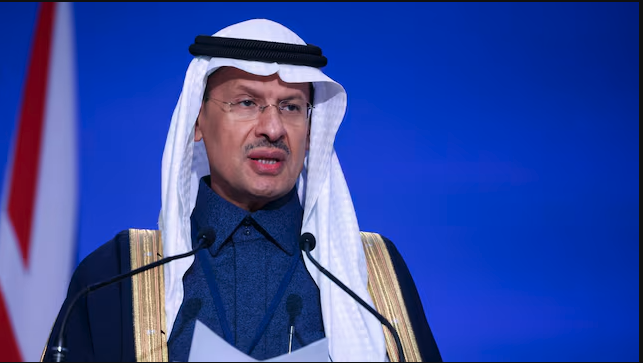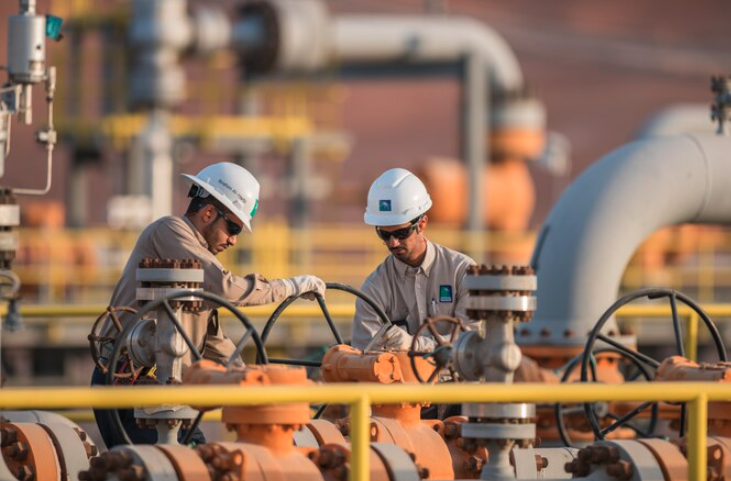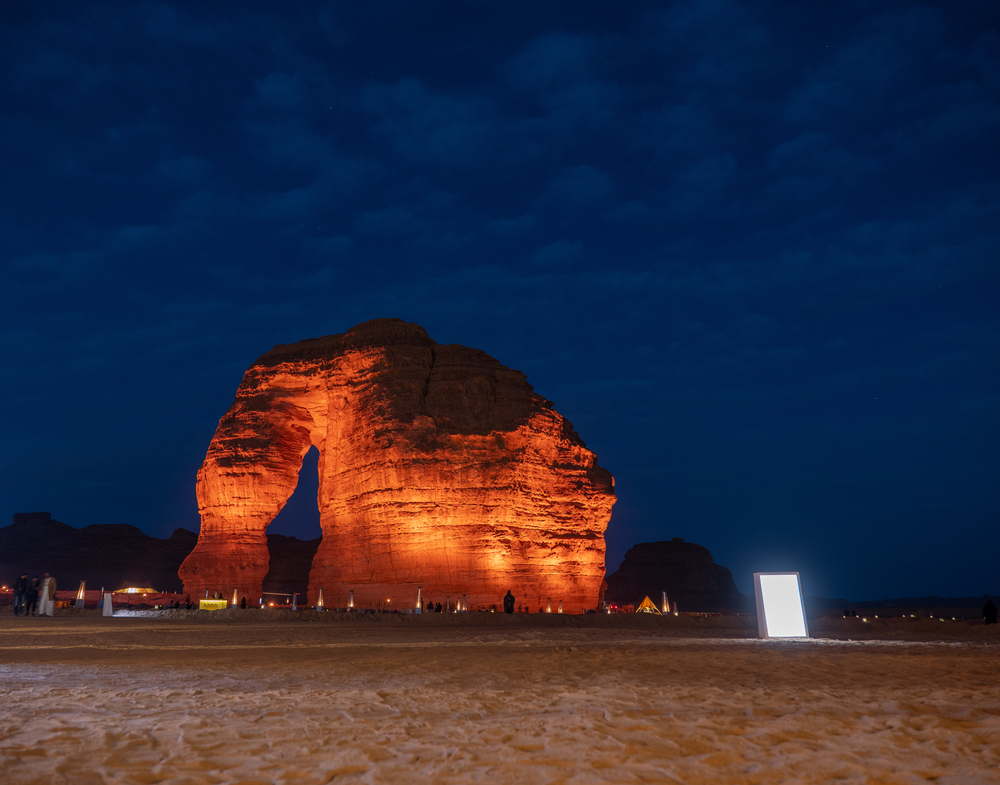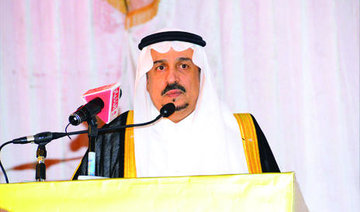RIYADH — The $23 billion Riyadh Metro launched an auction on Sunday for private companies to name and advertise in select metro stops when the system opens in 2019, an initiative that could generate millions of dollars to help cover operational costs.
Construction on the 176-kilometer metro began in 2014 after contracts were awarded to consortiums headed by US construction giant Bechtel Corp, Spain’s Fomento de Construcciones y Contratas and Italy’s Ansaldo STS.
The metro’s six lines and 85 stations are scheduled to be operational by the end of 2019. They will be served by electric, driverless trains in what officials describe as the world’s largest public transport system currently under development.
Construction has pushed ahead amid speculation the project could be scaled back or delayed following a slump in Saudi Arabia’s oil revenues. The metro is part of the country’s ambitious program to reform the economy and society.
Local and international companies licensed in the kingdom will be eligible to bid for naming and advertising rights at 10 stations, said officials from the state-run Arriyadh Development Authority (ADA), which oversees the metro project.
Another 10 stations could be offered at a later auction. Bids must be submitted by Jan. 25 and winners will be announced by mid-2018, the officials said.
“(The revenues) will be allocated for running the train and supporting the public transit system in the city”, said Alwalid Alekrish, Director of Construction Development Projects and Project Director of the Riyadh Metro.
He declined to specify how much the auction was expected to generate, but the potential is large. The metro in neighboring Dubai has earned hundreds of millions of dollars with a similar initiative, according to local media.
Promotional materials suggested winning companies would have their logos plastered throughout the stations – at turnstiles, elevators, passageways and shopping areas.
Riyadh Metro joins station branding ride
Riyadh Metro joins station branding ride

New Saudi real estate directives reinforce home ownership goals: Finance minister

RIYADH: Saudi Arabia’s newly announced real estate directives underscore the Kingdom’s commitment to increasing homeownership among its citizens, according to the finance minister.
The changes were initially announced in March, following a comprehensive study by the Royal Commission for Riyadh City and the Council of Economic and Development Affairs.
The review examined land price dynamics and rental pressures in Riyadh and proposed a set of regulatory and planning solutions aimed at long-term market stabilization.
Among the key provisions is the lifting of restrictions on land transactions and development in targeted areas of northern Riyadh.
In an interview with Alekhbariyah, Mohammed Al-Jadaan said Crown Prince Mohammed bin Salman’s mandates are intended to raise the proportion of Saudi families who own homes to 70 percent by 2030 – up from 47 percent in 2016.
“The generous directives will contribute to reducing volatility and controlling the rise in real estate sector prices, and will also limit inflation in the Kingdom’s economy,” Al-Jadaan stated.
The move authorizes the sale, purchase, division, and subdivision of land, as well as the issuance of building permits, across a 17-sq.-km area bordered by King Khalid Road and Prince Saud bin Abdullah bin Jalawi Road, and a 16.2-sq.-km section north of King Salman Road, extending to Abu Bakr Al-Siddiq Road and the Al-Qayrawan District.
These areas, combined with previously released plots, bring the total available for development to 81.48 sq. km.
Al-Jadaan said the expanded land access will tighten the supply and demand gap in the real estate sector by lifting restrictions on transactions and development in northern Riyadh.
He noted that developers are expected to respond by expanding commercial and residential projects, ultimately easing price pressures.
To further facilitate home ownership, the RCRC has been tasked with delivering between 10,000 and 40,000 fully planned and developed residential plots annually for the next five years.
These will be priced at no more than SR1,500 ($399.87) per sq. meter and made available to married citizens or individuals over the age of 25 who do not currently own real estate.
The issued plots will be subject to resale, rental, and mortgage restrictions for 10 years unless used to finance construction. If the land remains undeveloped within that time, ownership will revert to the government, with the buyer reimbursed.
Al-Jadaan emphasized that these changes would improve access to financing. Saudi citizens will have better chances to obtain financial support to own a residential home or a commercial estate, he explained.
Additional reforms include amendments to the white land fees system, to be implemented within 60 days, aimed at incentivizing the development of unused land.
Within 90 days, the government will introduce new regulatory measures to ensure balanced relationships between landlords and tenants.
The General Authority for Real Estate and the RCRC will monitor price trends and submit periodic reports to evaluate the effectiveness of the measures.
Al-Jadaan further noted that these initiatives prove the Kingdom’s ability to stabilize the real estate sector’s volatility through entities, institutions, and regulations.
Saudia expands European footprint with seasonal Vienna, Athens routes

RIYADH: Saudi Arabia’s national carrier Saudia has launched direct flights to Vienna and Athens as it enhances its presence in Europe as part of a broader network expansion strategy.
The airline will operate three weekly flights to the Austrian capital, which began with an Airbus A320 service from King Abdulaziz International Airport to Vienna International Airport, the company said in a statement.
Saudia plans to extend the service with flights from Riyadh’s King Khalid International Airport starting in June.
The aviator also launched seasonal flights to Greece’s capital, which will run three times per week, with the inaugural flight departing from Riyadh on April 2, also operated by an Airbus A320.
The national flag carrier is also set to introduce flights from Jeddah to Athens starting in June 2025.
The routes are part of a previously announced plan to introduce 11 new destinations this year, including Venice, Athens, and Nice as well as Malaga and Bali.
The expansion comes as Saudia posted a 16 percent year-on-year increase in international passenger traffic in 2024, aligning with the Kingdom’s National Tourism Strategy, which targets 150 million annual visitors by 2030.
Marking the Vienna flight, the airline posted on its official X account: “This new destination is an addition to Saudia’s network of over 100 destinations across four continents, supporting national efforts to grow tourism, entertainment, sports, and religious travel, including Hajj and Umrah.”
The new routes come after the airline launched a three-weekly service to Bali earlier this week, its second regular route to Indonesia after Jakarta.
Last month, the airline also signed an agreement with Indonesia’s Ministry of Religious Affairs to expand pilgrim transportation and improve services for the 2025 Hajj season.
The new services strengthen Saudia’s role in the Kingdom’s Air Connectivity Program, which has introduced more than 60 direct international routes since its 2021 launch.
With a fleet of 147 Boeing and Airbus aircraft, the airline plans to expand further, with 118 new aircraft set to join its operations.
As part of its 2025 network expansion, Saudia is also set to launch flights to Antalya, Turkiye, and Salalah, Oman, underscoring its broader goal of increasing global market share and positioning itself as a key player in international travel.
Energy technologies under development more promising than ever before: IEA

RIYADH: The range of new energy technologies under development globally is broader and appears more promising than ever before, according to a prominent think tank.
In its latest report, the International Energy Agency said that the modern energy technology landscape is highly dynamic, with both emerging and established economies contributing to the growth of innovation in the sector.
The analysis from the IEA comes at a time when countries including Saudi Arabia are actively pursuing advanced technology in the sector, as the Kingdom is trying to diversify its energy mix through renewables and nuclear power.
“Innovation is the lifeblood of the energy sector, particularly in today’s fast-moving times with the global energy mix shifting and major trends such as electrification having far-reaching effects,” said Fatih Birol, executive director of the IEA.
He added: “A wide range of technologies now appears to be coming close to market, offering hope for improvements in energy security, affordability and sustainability over the long term.”
The energy agency further said that the global energy innovation landscape is at a pivotal moment amid signs of slowing momentum in financing and shifting priorities.
“We require investment, both public and private, to scale up innovative solutions. The payback may not always be quick, but it will be lasting,” said Birol.
R&D in energy innovation
According to the IEA, energy innovation has delivered major economic and security benefits worldwide.
Public research and development investments in response to energy crises in the 1970s, reaching 0.1 percent of the gross domestic product, drove the expansion of nuclear power and reduced many countries’ reliance on imported fuels.
Nuclear is set to form a key part of Saudi Arabia’s energy mix, and in January the Kingdom’s Energy Minister Prince Abdulaziz bin Salman also said that the nation is planning to begin enriching and selling uranium.
Launched in 2017, Saudi Arabia’s National Atomic Energy Project is a cornerstone of the Kingdom’s strategy to diversify its energy sources and reduce its dependence on fossil fuels.

An additional report by the IEA in January projected that annual investments in the nuclear energy development sector would need to double to $120 billion by the end of this decade to meet the rising demand for infrastructure development.
The initiative aims to integrate nuclear power into the national energy mix, enhancing sustainability and fulfilling international commitments.
In its latest report, the energy agency added that energy R&D spending has risen at around 6 percent per year in real terms, with direct government funding across the world up again in 2024, above the $50 billion of the previous year — although the rate of increase has slowed.
“Initial indications of spending in 2024 in the United States and Canada suggest flatter year-on-year growth, balanced by larger increases in Japan and Norway,” said the IEA.
Regarding other major innovative developments, the IEA said that technological advancements in batteries and electric vehicles have lowered oil import needs in China, while shale technology innovation transformed the US from an energy importer to a net exporter.
“The impacts of energy technology innovation are also visible at the level of trade balances. The implementation of horizontal drilling and hydraulic fracturing enabled the US to shift from importing 46 percent of its oil and natural gas needs in 2000 to exporting the equivalent of 10 percent of its demand today,” said the report.
It added: “Innovation in batteries, electric vehicles and their manufacturing enabled China’s oil imports to be 8 percent lower in 2024 than if these EVs had been conventional cars.”
Geographical shift in energy innovation
According to the report, the global landscape of energy innovation is currently witnessing a rapid shift, with nations like China becoming the largest single country for energy patenting in 2021, overtaking Japan and the US.
The IEA added that more than 95 percent of China’s energy patenting in 2022 was in low-emissions technology areas.
Globally, between 2000 and 2022, low-emissions energy patenting was four and a half times that for fossil energy.
The analysis highlighted that more innovation efforts globally are directed toward small-scale and modular energy technologies such as batteries and electrolyzer.
Around half of China’s energy patenting and 90 percent of its venture capital funding is directed to mass-manufactured and modular low-emissions technologies. Innovation in these areas has helped underpin the Asian nation’s lead in several energy technology supply chains.
In Europe, around 50 percent of energy patenting is directed toward smaller-scale low-emissions technologies.
The IEA added that the continent is also active in large engineering projects that generally have more uncertain impacts on long-term competitiveness.
The analysis highlighted that energy inventions in the US are equally spread across fossil fuel as well as large- and smaller-scale low-emissions technologies.
VC funding landscape
The IEA revealed that VC funding for energy technologies surged more than sixfold from 2015 to 2022, reaching levels equivalent to all public energy R&D combined, helping 1,800 startups obtain private capital.
Some $230 billion has been injected into energy startups since 2015, and expectations for this market continue to grow.
“Even if only a fraction of these firms succeed, they could have a significant impact on global energy systems by the 2030s. However, this investment trend reversed in 2023 and 2024, with VC funding declining by more than 20 percent amid tighter financial conditions,” said the IEA.
It added: “The only sector to see growth in VC funding during this period was artificial intelligence, which offers potential to accelerate energy innovation but may also draw capital away from the energy sector.”
The report further said that the primary factor that resulted in the decline of VC funding was inflation, but other elements, like uncertainties about political commitments to climate policies, have also contributed to this trend.
Looking ahead to future funding trends, the IEA noted that early-stage investments in energy storage and batteries remain strong. Additionally, in 2024, there was a noticeable increase in funding for startups focused on technologies related to nuclear energy, synthetic fuels, and carbon capture, utilization, and storage.
In March, energy giant Saudi Aramco launched a pilot direct air capture unit capable of removing 12 tonnes of carbon dioxide annually from the atmosphere.
Aramco said that the facility, developed in collaboration with Siemens Energy is the Kingdom’s first carbon dioxide direct air capture unit.
Affirming its commitment to a sustainable future, Saudi Arabia is also building the world’s largest carbon capture hub on the east coast of the Kingdom in Jubail.
The project is a joint initiative of Saudi Aramco and the Kingdom’s Ministry of Energy and will have a storage capacity of up to 9 million tonnes of carbon dioxide a year by 2027.

Future outlook
The IEA said that it tracked 580 demonstration projects that are currently aiming to gather essential operational experience by 2030.
The report revealed that $60 billion in public and private financing has already been allocated to these projects in areas such as hydrogen-based fuel production, advanced nuclear designs, floating offshore wind, and CCUS.
“These projects are critical for commercialising emerging technologies but face delays due to inflation and policy uncertainty. Most projects have still not reached final investment decision and 95 percent of demonstration funding is concentrated in North America, Europe and China,” said the report.
It concluded: “At a time of shifting government priorities, coordinated action can nonetheless ensure that a global portfolio of projects bridge the ‘valley of death’ for key technologies to meet climate goals.”
GCC’s digital push nears global standards but gaps remain: IMF report

RIYADH: Economies across the Gulf Cooperation Council region are closing the gap with advanced nations when it comes to digital transformation, according to a new International Monetary Fund report.
The study found that the region has rapidly advanced in digital infrastructure and government services since the pandemic but still faces challenges in financial inclusion, corporate digital adoption, and workforce readiness for artificial intelligence.
The findings come as Gulf states accelerate efforts to diversify their oil-dependent economies through technology-driven growth. Saudi Arabia has launched multi-billion-dollar initiatives such as NEOM, Dubai has pushed forward the Digital Silk Road, while Bahrain and Qatar are emerging as fintech hubs.
“Digitalization is transforming the global economic and financial landscape, with the potential to boost productivity and promote diversification in the Gulf Cooperation Council,” stated the report.
“The COVID-19 pandemic has significantly accelerated the digitalization agenda globally, creating new opportunities for the digital economy as an increased number of activities have shifted online,” it added.
The IMF report highlighted that the GCC’s digital acceleration has been particularly notable in public sector services and connectivity. The region’s “GovTech Maturity Index,” which measures digital government transformation, now rivals or exceeds the average of advanced economies.
Saudi Arabia and the UAE lead the region, with their GTMI scores ranking above the 95th percentile globally.
“Most GCC countries have a higher GTMI than the AE (advanced economy) average in 2022, with substantial progress made in every GCC country since the onset of the pandemic,” the report said.
Bahrain, Kuwait, and Saudi Arabia saw particularly sharp improvements, driven by initiatives such as Bahrain’s Tawasul platform for citizen engagement and Saudi Arabia’s Vision 2030 digital economy push.
The report noted that progress has been uneven, with Kuwait lagging in digital citizen engagement and core government systems, while Oman has room for improvement in public service delivery.
“Kuwait, for instance, trails behind its regional counterparts in critical areas, such as digital citizen engagement and the robustness of core government systems,” the IMF report noted.
Fintech growth and financial inclusion gaps
The financial sector has also seen rapid digitalization, particularly in fintech.
Saudi Arabia and the UAE dominate regional investment in this area, with Saudi fintech funding deals surging 80-fold between 2019 and 2022.
Regulatory sandboxes, first introduced in Bahrain, have spread across the GCC, fostering innovation in digital banking and payments.
Despite these advances, the IMF noted that financial inclusion remains a challenge. While access to bank accounts and digital payments has improved, the GCC still lags behind advanced economies.
The report explained that digitalization is strongly correlated with financial inclusion, particularly in emerging markets. A one-unit increase in the IMF’s EDAI — a composite measure of digital progress — is associated with a 0.76 percentage point rise in financial inclusion in emerging markets.
Bahrain and Saudi Arabia stand out as having the highest potential gains from further digitalization. The estimated coefficients of the interaction term for both the countries are positive and significant, indicating a larger-than-EM average effect of digitalization on financial inclusion, the report stated.
Corporate sector and AI
The corporate sector’s digital adoption varies widely across the GCC. While the region boasts world-class digital infrastructure, local production of digital goods and services remains limited.
The report highlighted that Saudi Arabia’s share of inputs from digital industries is significantly lower than in countries at the forefront of digitalization.
Companies in digitally intensive industries, however, have shown greater resilience during economic downturns. “Firms in industries with high intensity of digital inputs suffer smaller revenue losses, and so do firms in digital-intensive industries,” the report added.
Artificial intelligence adoption is rising, with 62 percent of respondents in a McKinsey survey reporting AI use in at least one business function. The UAE and Saudi Arabia are regional leaders in AI preparedness, but gaps persist in digital innovation and regulations.
“The GCC is better prepared than an average emerging market in embracing AI, but gaps remain relative to advanced economies,” the IMF report stated.
Policy priorities: skills, regulation, and inclusivity
The report identified several key areas where the GCC needs to concentrate its efforts to maintain and build upon its digital progress.
One major focus should be on enhancing digital skills, as the region currently trails behind advanced economies in both basic digital literacy and more advanced ICT capabilities.
Implementing comprehensive programs to upskill workers, with particular emphasis on emerging fields like artificial intelligence and cybersecurity, will be crucial for future growth.
Another critical area is the strengthening of fintech regulations. While regulatory sandboxes have successfully encouraged innovation in the financial technology sector, the GCC now requires more comprehensive regulatory frameworks to ensure long-term stability and proper consumer protections as these digital financial services expand.
The report also highlighted the importance of boosting digital adoption among corporations, especially small and medium-sized enterprises. Wider integration of digital tools across businesses could significantly improve overall productivity and make companies more resilient to economic fluctuations.
Finally, as automation and AI continue transforming the job market, the IMF findings noted that GCC will need to proactively address potential labor market disruptions. This includes developing robust social safety nets and creating effective retraining programs to help workers transition into new roles, minimizing the negative impacts of technological displacement on the workforce.
The IMF emphasized that cybersecurity and data protection reforms are also key to maintaining trust in digital ecosystems.
A regional leader with room to grow
The IMF report’s findings underscore that while the GCC’s digital transformation has been impressive, the journey is far from over. With targeted policies, the region can solidify its position as a global digital hub while ensuring that the benefits of technology are widely shared.
“Decisive implementation of the GCC countries’ comprehensive reform agendas — with a special focus on bridging the digital divide and ensuring labor market inclusiveness — will support their efforts to further digitalization,” the report said.
Saudi Arabia sees record $41bn in inbound tourism spending as Vision 2030 projects come to life

RIYADH: Inbound tourism spending in Saudi Arabia surged to a record SR153.61 billion ($40.95 billion) in 2024, marking a 13.82 percent annual increase, according to data from the Saudi Central Bank.
The rise also pushed the Kingdom’s travel balance surplus to its highest annual level yet — SR49.78 billion — up 7.81 percent from the previous year. Outbound spending by Saudi residents rose 16.94 percent year on year, reaching SR103.84 billion.
In January, the Saudi Press Agency reported that the Kingdom welcomed 30 million international visitors in 2024, a 9.5 percent increase from the previous year. This influx of travelers is not merely transient, as they play a pivotal role in reshaping Saudi Arabia’s economy and global image.
According to the latest Ministry of Tourism report, which covered the third quarter of 2024, non-religious tourism now accounts for the majority of international travel, signaling a broader appeal and longer stays as visitors explore the nation’s cultural, entertainment, and business offerings.
Tourism’s direct and indirect contributions — spanning sectors from transport to hospitality — brought the Kingdom’s total economic impact from travel and tourism to SR498 billion in 2024, according to the World Travel and Tourism Council. This represents 12.45 percent of gross domestic product, up from 11.5 percent the preceding year.
As part of Vision 2030, Saudi Arabia is undergoing a rapid transformation that places tourism and international investment at the heart of its future.

Sweeping reforms, including 100 percent foreign ownership in key sectors, a streamlined investment law, and special economic zones, have made the Kingdom one of the most attractive destinations for global investors and travelers.
The Saudi government is not only making it easier to visit the Kingdom but is also actively promoting a wide range of offerings in the tourism sector.
Billions of dollars are being invested in a new era of high-end, culturally rich, and environmentally conscious destinations. Among them are the Red Sea Project, a luxury archipelago of sustainable resorts; NEOM’s Trojena, the Gulf’s first outdoor ski destination; and Diriyah, a historical landmark just outside Riyadh set to welcome 27 million visitors annually by 2030.
Cultural pillars such as AlUla, with its 200,000 years of history, and Jeddah’s Al-Balad Historic District, which is currently undergoing a major restoration, are also attracting global attention.
Mega-projects including Qiddiya, AMAALA, and Sindalah promise to deliver experiences ranging from world-class entertainment to luxury yachting.
Supporting this tourism boom is a rapid expansion in infrastructure. The Kingdom now boasts over 426,000 licensed hotel rooms, with an international hospitality chain presence that is expected to grow from 47 percent to 65 percent, according to Knight Frank. Brands including Accor, Hilton, and Marriott are all ramping up investments.
Accessibility is no longer a barrier, with Saudi Arabia’s eVisa platform allowing travelers from 66 countries — including the US, UK, and Germany, as well as Japan, Australia, and China — to apply for a one-year, multiple-entry permit.
According to a recent report by the ministry, tourists can stay up to 90 days per visit, with access granted for leisure, Umrah, business events such as the Interenational Meetings, Incentives, Conferences, and Exhibitions Summit, and visiting friends and family. Hajj remains under a separate, seasonal visa system due to religious considerations.
Additionally, the Kingdom’s strategic geographic location— within six hours’ flight time of 40 percent of the world’s population— along with its emphasis on sustainable, high-end tourism, positions the nation as an increasingly significant and rapidly growing destination in the global travel landscape.
Leisure and business travel take center stage

Saudi Arabia’s tourism sector is undergoing a noticeable transformation, with leisure and business travel now fueling much of the Kingdom’s inbound growth. While religious tourism continues to play a key role, the latest data shows that a broader, more diversified visitor profile is emerging.
By the third quarter of 2024, the Ministry of Tourism reported a clear shift in travel purposes: religious pilgrimages still accounted for 41 percent of inbound visits, but non-religious travel is gaining momentum.
Leisure tourism represented 24 percent of the total, followed by visits to friends and relatives at 22 percent, while business, education, and healthcare-related trips comprised the remainder.
This growing appetite for Saudi Arabia’s tourism experiences is drawing in travelers and unlocking billions in investment.
Private sector funding in the Kingdom’s tourism industry climbed to SR14.2 billion in 2024, up from SR12 billion the previous year, according to Tourism Minister Ahmed Al-Khateeb as reported by Bloomberg in January.
Roughly 40 percent of that capital came from foreign investors, signaling rising global confidence in Saudi Arabia’s ambitious tourism agenda.
Al-Khateeb highlighted that international investors are increasingly focusing on the Kingdom, particularly as other regions experience stagnation or slower growth. He explained that investors see Saudi Arabia’s ambitious tourism plans as a way to unlock long-untapped potential in a sector that had been largely inaccessible for decades.
The surge in investment aligns with the Kingdom’s broader push to become a global travel hub.
To support this ambition, Saudi Arabia aims to generate $80 billion in private investment by the start of the next decade, helping fuel Crown Prince Mohammed bin Salman’s Vision 2030 strategy to diversify the Kingdom’s economy beyond oil.
While Europe and the US currently lead the wave of foreign investment, Al-Khateeb noted that active discussions are underway with Asian partners as well — including China, South Korea, and Malaysia — who are exploring opportunities in areas such as hospitality, retail, and real estate.






















